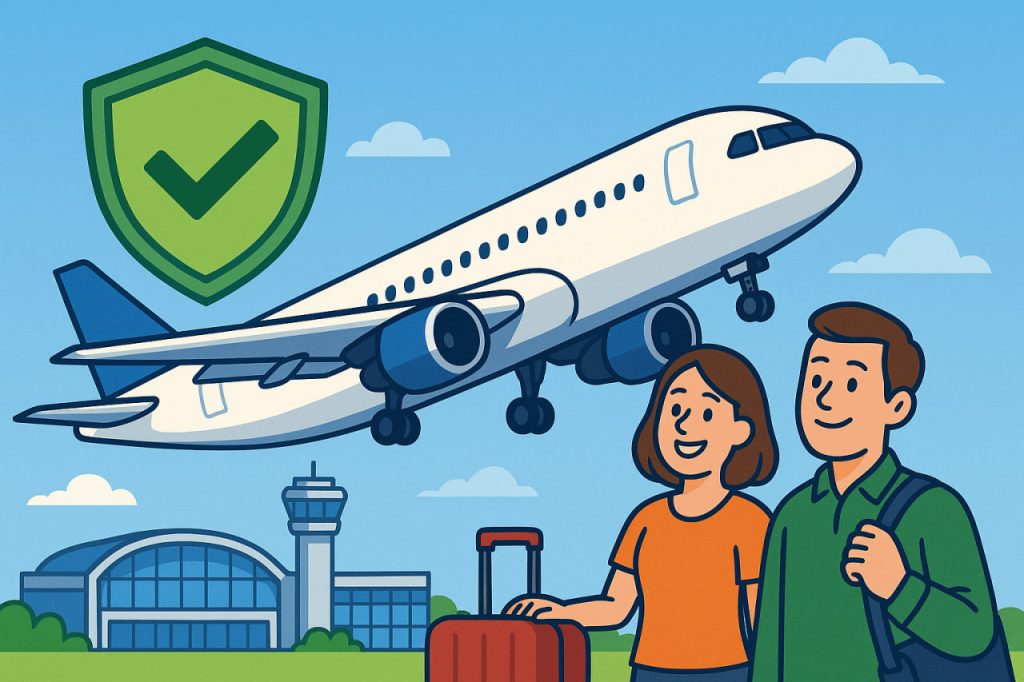Air travel remains one of the safest forms of transportation in the world, but for passengers who want extra confidence in their journey, understanding how to identify a safe and well-maintained aircraft is essential. While every commercial plane must meet international safety standards, some models, airlines, and maintenance practices provide an added layer of reliability. Choosing a safe airplane means paying attention not just to the aircraft itself, but also to the company that operates it and the regulations it follows.
The Importance of Aircraft Design and Certification
Every commercial airplane undergoes years of design, testing, and certification before carrying passengers. Organizations like the Federal Aviation Administration (FAA) and the European Union Aviation Safety Agency (EASA) ensure that planes meet rigorous safety requirements. Models such as the Airbus A320, Boeing 737, Embraer E-Jet, and ATR 72 have established strong safety records through decades of use and continuous updates. Modern aircraft are built with redundant systems — meaning that if one component fails, others take over automatically to ensure safe operation.
Maintenance and Airline Reputation
Even the safest airplane can become risky if it isn’t properly maintained. When booking a flight, consider the airline’s safety reputation, not just the ticket price. Airlines that adhere to strict maintenance schedules, employ certified technicians, and participate in international safety audits (such as IOSA — IATA Operational Safety Audit) are generally more reliable. Low-cost carriers can also be safe if they follow these same global standards.
A good practice is to check whether the airline has had recent incidents or suspensions, which can be found through aviation databases or consumer safety websites. Transparency in safety reporting is a strong indicator of trustworthiness.
The Role of Aircraft Age
Contrary to popular belief, an older airplane isn’t necessarily unsafe. What matters is maintenance quality and modernization. Many aircraft are regularly upgraded with new engines, avionics, and safety systems, effectively extending their lifespan. However, newer aircraft often feature advanced materials, fly-by-wire systems, and automated diagnostics, which further enhance safety and efficiency.
Choosing the Right Model and Operator
When booking, passengers can often see the aircraft type on the airline’s website or through flight search engines like FlightRadar or SeatGuru. Look for modern, widely used models with proven safety records. For regional flights, Embraer and Bombardier jets are highly rated. For long-distance travel, the Boeing 787 Dreamliner and Airbus A350 offer state-of-the-art safety systems and high reliability.
Pilot Training and Safety Culture
A major factor in flight safety is the training and professionalism of pilots. Airlines with rigorous pilot education programs, regular simulator training, and adherence to international procedures statistically have fewer incidents. A strong safety culture — where all employees prioritize safety over schedule — is as important as technology itself. Countries with well-regulated aviation authorities generally have the safest records.
Tips for Travelers
- Check the airline’s safety rating on trusted sites like AirlineRatings.com.
- Avoid carriers banned by the EU or FAA, as they fail to meet international standards.
- Choose direct flights when possible — fewer takeoffs and landings reduce risk.
- Observe safety briefings and choose seats near exits if that makes you feel more secure.
- Stay calm and informed — understanding safety procedures increases confidence and preparedness.
Interesting Facts
- Commercial aviation is about 100 times safer than driving by car.
- Modern aircraft can continue flying safely even if one engine fails.
- Airplanes are tested to withstand extreme conditions — from lightning strikes to strong turbulence.
- The average age of the global commercial fleet is around 10 years, with constant renewal and inspection cycles.
Glossary
- Fly-by-wire system — an electronic control system that replaces manual flight controls with digital commands.
- Redundant system — backup mechanisms ensuring function if one part fails.
- IOSA — IATA’s global standard for airline operational safety audits.
- Avionics — electronic systems used for flight control, communication, and navigation.
- Turbulence — irregular air movement that can cause temporary motion of an aircraft.


